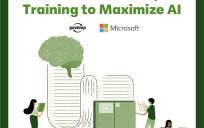 Recently, Frank Yiannas of the FDA invited agency employees to follow in the footsteps of UPS’s “No Left-hand Turns” initiative. As government employees, we often generate more data than we know what to do with, and certainly more data than we routinely use. Rather than always embarking on new projects to achieve progress, Yiannas invited FDA employees to take a closer look at the data they already have.
Recently, Frank Yiannas of the FDA invited agency employees to follow in the footsteps of UPS’s “No Left-hand Turns” initiative. As government employees, we often generate more data than we know what to do with, and certainly more data than we routinely use. Rather than always embarking on new projects to achieve progress, Yiannas invited FDA employees to take a closer look at the data they already have.
The UPS Story
First, let’s take a look at the fascinating origin of UPS’s “No Left-hand Turns” policy. While it’s not exactly a strict policy, it’s an interesting discovery upon which the company stumbled after analysis of big data. Put simply, UPS is one of the largest delivery services in the world. Not surprisingly, they also have one of the largest fleets of delivery vehicles in the world (over 96,000 vehicles). These delivery vehicles are tracked and significant amounts of data are generated for each vehicle. These data include not only the location of a truck at any given time, but also things like the speed at which the truck is traveling, how much time the driver spends idling at stops, the routes drivers take, etc.
This makes sense that a company would want to track these things. But one of the conclusions was quite unexpected: it didn’t pay to make left-hand turns. UPS discovered that drivers were spending a lot of time idling while waiting to make left turns. This resulted in higher gas consumption and longer trip durations, not to mention the greater safety risk associated with making left turns.
So did UPS immediately put the kibosh on left turns? Not quite. UPS decided to run a series of experiments. In these experiments, they replaced left-hand turns with right-hand turns, even if the driver had to make multiple right turns in order to get to the destination. The results were surprising: eliminating left turns saved time, money, and CO2 emissions. Today, only about 10% of turns made by UPS trucks are left turns. UPS estimates that it’s saved over 10 million gallons of gas this way. Pretty impressive.
No Left Turns: A Trial Run
The cool part about this is that no one at UPS came up with the hypothesis that left-hand turns are bad and then designed a set of experiments to collect data towards testing it. This wasn’t something they set out to test at all. This discovery was made using data that they already had. There was no extra data collection beyond what the trucks were already gathering. The data were all there all along. Granted, doing the experiment where left turns were replaced with right turns did constitute additional data collection, but the trucks didn’t need to be fitted with any additional devices and the drivers didn’t have to do anything different besides follow their assigned route. It was all already there.
What Does This Mean for Me?
So what does this mean for everyone else? The UPS success story brings up a great question- what data are you already sitting on that you could leverage? Perhaps there’s a hidden gem in there, akin to UPS’s revelation. In other words, how can you query your data differently? Here are a few questions to consider:
- What would a wildly successful agency mission look like? (For UPS, this might have been delivering more packages in less time, with fewer accidents.)
- What problems are keeping this from happening? (Again, using UPS as an example: drivers stuck in traffic or other delays on routes.)
- Do you have any data relevant to this problem? (Yes, UPS knew where their delivery trucks were at all times and how fast they were moving.)
- Is there anything anomalous about the data? (Large chunks of time where trucks were idling, waiting to make left-hand turns, or speculatively, perhaps there were large chunks of time spent in traffic when delivery routes included areas under construction, etc.)
- Does the anomaly represent an opportunity for improvement? If not, does it represent an opportunity for further testing?
Or maybe your agency’s situation isn’t so clear cut. In that case, maybe other questions are more applicable: do you ever wonder about the “secret life” of certain tasks or documents, or how is it exactly that things fall through the cracks? Is there data that you have that could shed some light on that?
Yes, That Means You
In a 2014 GovLoop survey of federal employees, 78% of the respondents said that they “use data or perform analytics as a significant component of [their] job.” Today, this number is likely even greater. In that same survey, only 4% of respondents answered that their agency was “extremely effective” at “understanding, analyzing and using data.” This leaves a lot of room for growth. We are all probably sitting on data that holds if not a groundbreaking conclusion, at least an interesting one.
For more information about leveraging big data in government, see the Big Data Playbook for Government.
Erica Bakota is a GovLoop Featured Contributor. After earning her PhD in chemistry at Rice University, she joined USDA as a research chemist, where she studied lipid oxidation and alternatives to partially hydrogenated oils. She then returned to Houston, Texas to join the Harris County Institute of Forensic Sciences, where she led method development and validation for the Forensic Toxicology Laboratory. In March 2018, she made a move back to the feds and is now with the FDA as a chemist at the Kansas City Laboratory. Her work at FDA focuses on active ingredients in dietary supplements and pesticide residues in foods. You can read her posts here.





No Left Turns. Did not know this about UPS. Interesting for sure and great use of data!
What an encouraging story! What’s amazing are UPS’ huge savings and discovery that came out without any extra work needed on the drivers’ end.